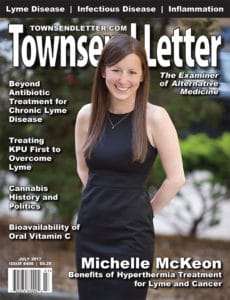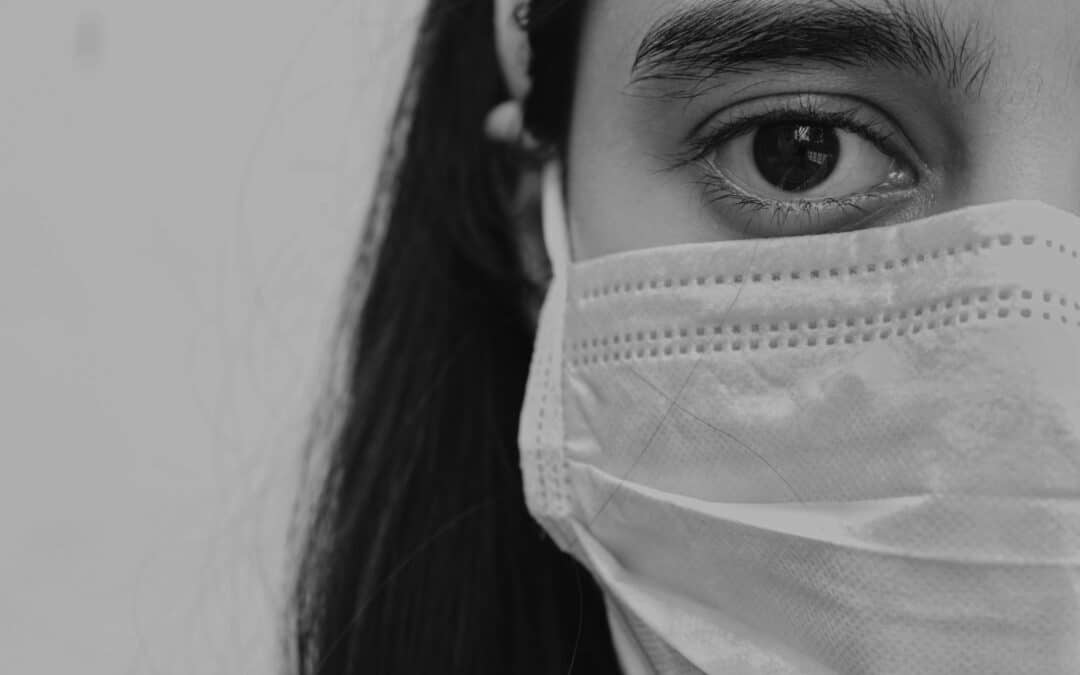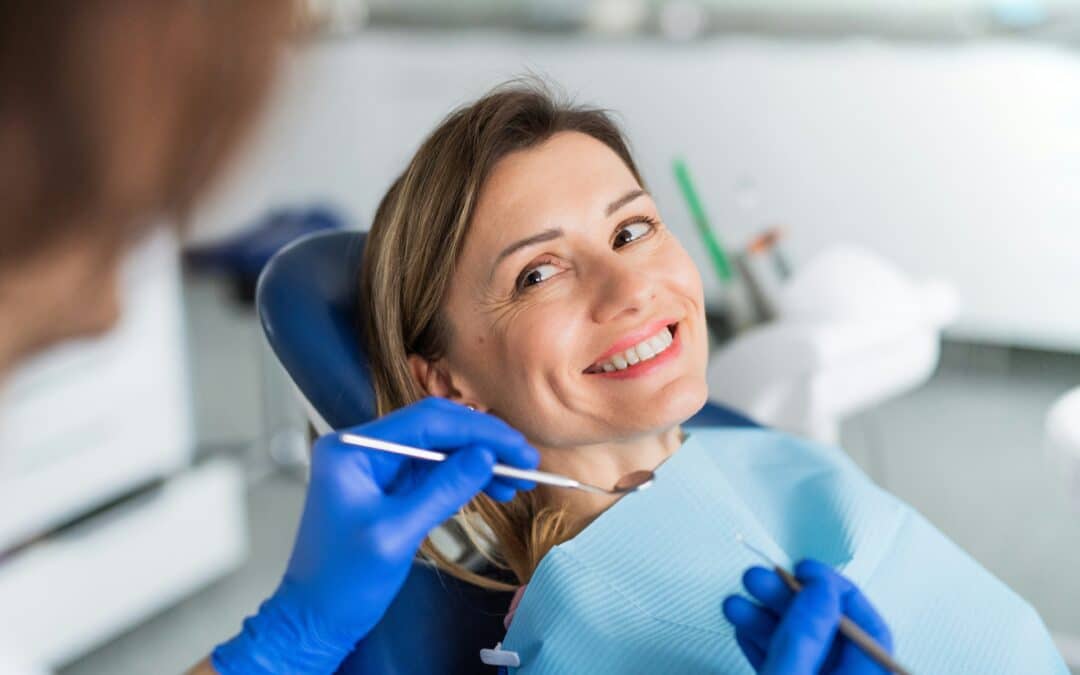Authored by Michelle McKeon
Hyperthermia treatment…not really a treatment that is often talked about in the United States, is it? Similar to Lyme disease, this treatment has been around for a while, though it has not received the recognition that it deserves. We are at the cusp of acknowledging the immense impact Lyme disease has on our society and the complexity of tick-borne illnesses in general. I like to think of tick-borne illnesses as a puzzle – like those puzzles called Impossibles where all of the pieces look the same, yet they are not; there are no edges or corner pieces, and there are a few extra pieces in the package just, you know, for the fun of it, to make it more challenging!

There are so many different pieces to the Lyme disease puzzle when trying to recover, and unfortunately there is no one-size-fits-all treatment. Lyme disease affects people differently because it attacks whatever is genetically weak in their system. While the US offers many different treatments for Lyme disease, sometimes the disease has progressed so far that sufferers have a difficult time responding to the treatments.
I personally suffered the devastating consequences of tick-borne diseases. While I tried many treatments that are offered in the States, my body was not responding to them. The tick that bit me not only infected me with Lyme disease but also the co-infections Bartonella, Mycoplasma pneumoniae, Protomyxzoa rheumatica, and Powassan virus. My illness progressed to the point where I became so debilitated that my doctors did not know if I would ever recover.
I could not recognize my family, my friends, or even myself. Processing information was nearly impossible. I had severe light, noise, smell, temperature, and food sensitivities. I did not have function over my neck, which developed into cervical dystonia. I had 70% nerve damage in my left inner ear, which caused nonstop vertigo, imbalance issues, and persistent ear pain. To top it off, I was suffering from an unimaginable amount of head pressure, fatigue, and brain fog.
However, I think the most challenging symptoms were the impending anxiety and depression that clouded over me. I never experienced anxiety or depression prior to being ill, and I could not understand why my brain was thinking the way that it was. I no longer felt control over my thoughts. I was too ill to understand that this was not me, and that the inflammation, pathogens, and toxicity in my brain were behind these thoughts.
During this time, a very reputable Lyme-literate medical doctor was treating me. He recommended that I travel to Germany to receive hyperthermia treatment: “Hyperthermia treatment uses whole-body infrared-A-irradiation to carefully increase the core temperature of the body.”1 The goal is to bring the patient’s body temperature to at least 105.8° F (41 ° C), which is the temperature believed to affect many strains of Borreliosis:
If the patient is able to tolerate higher temperatures, it is preferable to try and reach 107° F (41.67° C) and above. Reaching a higher temperature is more beneficial, as there is a better chance of eradicating more strains of Borreliosis and other pathogens that are likely causing illness.2
The clinic where I received treatments is an in-patient facility that offers a two to three week Lyme disease package. The package includes room, meals, labs, and treatments. On the first day, I met my team of physicians. They looked over additional medical records that I had brought, informed me more about my schedule, and then took me to receive further tests.
They kept me very busy the first few days preparing me for hyperthermia treatment. The treatments consisted of various detoxification, immune boosting, and antimicrobial therapies such as IV infusions of vitamin C, glutathione, EDTA, selenium, L-carnitine, magnesium, calcium, ozone, laser therapy, and the antibiotic Rocephin. Other adjunct therapies included colonics and enemas, pulsing magnetic field treatment in combination with singlet oxygen therapy, oral medication and supplements, and ionizing footbaths.3
After a few days of detoxification and adjunct therapies, I received my first whole-body hyperthermia treatment (WBHT). The clinic has a special unit that is well equipped and staffed. The WBHT lasts approximately five hours, and I was given a sedative so I didn’t remember anything until the procedure was finished. A rectal thermometer and catheter were used to monitor my body temperature and kidney function. My body temperature slowly rose and was held until my body reached close to 107° F (41.67° C). This peak temperature was held for around 60-90 minutes and then my temperature was slowly decreased.During the treatment, I received Rocephin, which is effective against extracellular forms of Lyme, though in conjunction with WBHT it becomes effective inside the cell, as well. In addition to Rocephin, patients are now given Flagyl during the WBHT and for the two-week stay at the clinic to attack the cyst form of Lyme.2
The day after the WBHT, I received the same antimicrobial, detox, and immune boosting therapies. These were also given throughout the days leading up to the second hyperthermia treatment. During the second hyperthermia treatment, I was able to get my body temperature a little bit higher, which is usually standard during the second round. A few more days of supportive treatments followed before I was discharged.
In addition to Lyme disease, the clinic also focuses on integrated oncology. It combines conventional therapy with science-based complementary treatments. The main focus of their protocol is whole-body hyperthermia treatment and local hyperthermia treatment in combination with detoxification and an immune biological support program to treat cancers. WBHT is particularly favorable in late-stage cancers with advanced solid tumors, advanced refractory or recurrent cancers, mesothelioma, advanced metastatic sarcoma, and advanced metastatic cancers. It is also beneficial for a host of other late-stage chemo-resistant metastatic cancers.1
“Local hyperthermia treatment is used as well by overheating tumor tissues from the outside, while leaving healthy tissues unaffected if the temperature is kept below 107.6° F (42° C).”2 Essentially, temperatures above 102.2° F (39.5° C) impair tumor cells by either destroying them or hindering their growth. This process of overheating the cells results in oxygen deficiency, which causes a lack of nutrients in the tumor. The cell metabolism is damaged through this process and the cell death of the tumor follows.4
The immune system is incapable of identifying tumor cells. However, once the cells are heated, they change. Certain proteins, known as shock proteins, form on the outside of the degenerated cell. The immune system is now able to detect these proteins as extraneous cells, directing the immune system to fight the cancer cells.5 As for healthy cells; they do not create shock proteins and therefore remain unharmed.
Another benefit to heat therapy is that using hyperthermia in conjunction with chemotherapy allows dosages of chemotherapy to be reduced, decreasing damage to the healthy tissues.6 In addition, hyperthermia can boost the immune system, which can help make chemotherapy and/or radiotherapy more successful. Isolated cases have shown that previously ineffective chemotherapy or radiation therapy can successfully damage cancer cells when combined with hyperthermia.7 Also, in several clinical phase III trials, there have been improvements of both local control and survival rates from adding local/regional hyperthermia to radiotherapy for patients with locally advanced or recurrent superficial and pelvic tumors.8
While hyperthermia treatment is a significant part of the clinics’ recovery program, the doctors also tailor the treatment protocol to strengthening each individual’s body – physically and psychologically. These physicians modify the protocol on a regular basis throughout the recovery process as the body changes. The effectiveness of these treatments is achieved through this in-patient clinic approach and by establishing a foundation for a long-term recovery program to follow at home, which ultimately provides a healthier quality of life.9
The clinic where I received treatment initially opened with a focus on oncology. Clinic staff discovered that some of their patients with cancer also had Lyme disease. Upon returning home from treatment, many of these patients’ Lyme symptoms subsided. As the staff further looked into the effects of heat therapy on Borreliosis, they decided to open their doors to patients with Lyme disease as well.
Since returning home from treatment, I too noticed significant improvements from WBHT. Though, to notice these improvements, it was vital for me to continue with an aggressive detoxification protocol. When Lyme bacteria and co-infections are killed, they release toxins, which can cause a Herxheimer reaction aggravating symptoms until the toxins are expelled from the body. To aid my body in eliminating these toxins, I received three IV infusions every week. Not only did these IV infusions help rid my body of toxins, but they also helped repair the cell membrane damage that was caused by the neurotoxicity in my brain. These IVs are part of the Patricia Kane protocol, which were crucial in my recovery.
I noticed the more I detoxed, the better I felt. Though, because I was so debilitated before I left for Germany, I still had a long road ahead of me when I returned. I observed little improvements every day, and I held onto those changes because they grew more substantial as I continued detoxing. I decided to introduce additional detoxification therapies to my recovery program that included infrared saunas, detox baths, coffee enemas, colonics, and herbal tinctures that helped detox the liver, colon, and lymphatic system. I also took a toxin binder before these therapies, which helped my body detox more efficiently.
The herbalist that provided these tinctures also used herbs from the Stephen Buhner protocol. While hyperthermia is very effective in killing a large number of pathogens, I do not believe that it kills everything. Therefore, I took additional antimicrobial herbs to help fight any strains that were still left in my system. I found success with these herbs, as they are potent, and unlike antibiotics they were able to travel through biofilms to fight the pathogens. “Biofilms are organic material in the body that builds itself around bacteria, protecting it from various environmental stresses and from becoming eradicated.”10 Finding therapies that were able to get into biofilms was essential for my improvement, as is the case for many chronic Lyme sufferers.
During this time, I added various supplements and vitamins to my regimen to help strengthen my body. I took guided imagery and tai chi classes, and I also became very interested in nutrition and diet. I found that my body responded very well to a diet that limited foods and drinks that contained gluten and that are high in carbs, sugar, dairy, alcohol, and caffeine. Restricting sugar intake is especially important, as candida (yeast overgrowth) and Lyme disease tend to go hand in hand. My diet was similar to the Paleo diet, and I made it a point to consume large amounts of foods that are high in good fats to aid in the repair of cell membranes.
Within six months, I was able to gain back the 20 pounds that I lost due to this illness, my hair that had fallen out was now growing back and looking healthier than ever, and my nails and skin no longer looked discolored. While my progress was slow, it was steady and there was so doubt I was improving. Many doctors that had seen me over the years were calling me the “miracle patient,” and they couldn’t believe that I was coming back from this. For the first time in a very long time, I was hopeful that one day I would feel like myself again.
About six months after receiving treatment in Germany and following a detoxification, immune boosting, and antimicrobial protocol, I decided to get tested again. Prior to my treatment in Germany I was tested at Fry Laboratories, and my results came up positive – showing a substantial amount of the co-infections Protomyxzoa rheumatica and Bartonella. I also received another test that detected Mycoplasma pneumoniae. Now six months later, all three tests showed no sign of infection. BAM, I was finally winning this war!
I still had symptoms though, and while I was making huge improvements, I was not at the point where I would be able to go back to work. I felt that I was missing something. Later that year, I saw a methylation specialist to see if I had any genetic defects that were holding back my recovery process. The most important discovery was that I had a gene known as the HLA that prevents the body from expelling mold mycotoxins effectively from the body.11 I soon realized, from additional blood results and from testing my home, that mold had become a huge roadblock in my healing. After moving to a mold-free apartment and tweaking my protocol to include additional treatments to target mold mycotoxins, I began improving at a much faster rate.
I was finally feeling strong enough to focus on treating the heavy metals that had accumulated in my body during this illness. Unfortunately, heavy metal toxicity is another obstacle that many chronic Lyme sufferers need to overcome in order to reach the next level of wellness. A biological dentist removed my amalgams to assist in reducing my high load of mercury. I also followed a pre- and post-treatment protocol that involved vitamin C drips, suppositories, supplements, and binders to assist in the detoxing of heavy metals.
It has been a little over five years since I returned from Germany, and I have my life back. While I still deal with some symptoms, they are much more manageable; and each year, I continue to improve. I try to live a balanced life by eating healthy, exercising, taking supplements, vitamins, and herbs, and detoxing weekly. Through this experience, I developed a passion for functional medicine, and I decided to go back to school to pursue a master’s degree in human nutrition.
I am also the co-owner of a company called Lyme and Cancer Services (https://thelymespecialist.com), where we refer people who are suffering with Lyme disease or cancer to clinics in Germany and Mexico that specialize in hyperthermia treatment. We work with people all over the world as a liaison between physicians at Fachklinik Dr. Herzog, St. Georg Klinik, Hannover Klinik, and Sanoviv Clinic and clients who are interested in receiving treatments at these integrative medicine clinics. We also advise people on a pre- and post-treatment protocol that involves treatments and recommendations regarding detoxification, antimicrobials, parasites, cell membrane repair, nutrition, mold, heavy metals, methylation, and EMF issues.
Lyme and Cancer Services provides guidance in scheduling clients at their clinic of choice, offers consultation services, and can connect them with others who have received hyperthermia treatment. We strive to advocate for tick-borne illnesses through writing articles and speaking at conferences and support groups. We have also written two extensive E-books for our clients with Lyme disease and for our clients with cancer. These E-books go over everything we believe patients would want to know about the clinics – therapies offered, pre-and post-treatment recommendations, and additional information on recovery factors.
Lyme sufferers need to be fighters to come back from this illness. Having navigated through the puzzle of Lyme disease and connected many of the little pieces that allowed my body to feel whole again, I genuinely believe that the protocol Lyme and Cancer Services recommends provides hope for even the sickest suffers to get their lives back. Original article from the Townsend Letter
References:
1. Whole Body Hyperthermia. Dr. Herzog’s Special Hospital. http://www.fachklinikdrherzog.de/index.php?option=com_content&task=view&id=19&Itemid=31&lang=en. Accessed August 6, 2016.
2. Fillar B, McKeon M. Lyme Disease: Lyme and Cancer Services Guide to Healing. Portage, MI: Brendan Fillar & Michelle McKeon; 2016.
3. St. Georg Treatment Protocol. Klinik St. Georg. https://www.st-george-hospital.com/lyme-center/lyme-treatment-protocol/. Accesse August 7, 2016.
4. Local Regional Hyperthermia. Klinik St. Georg. https://www.st-george-hospital.com/st-george-hospital/hyperthermia/local-regional-hyperthermia/. Accessed August 9, 2016.
5. Local Hyperthermia. Dr. Herzog’s Special Hospital. http://www.fachklinikdrherzog.de/index.php?option=com_content&task=view&id=23&Itemid=37&lang=en. Accessed August 7, 2016
6. Efremov A, Ivanov G, Suvernev A. Whole Body Hyperthermia at 43.544°C: Dreams or Reality. Available at https://www.ncbi.nlm.nih.gov/books/NBK6310/. Accessed October 28, 2016.
7. Hyperthermia. Klinik St. Georg. https://www.st-george-hospital.com/st-george-hospital/hyperthermia/. Accessed August 7, 2016.
8. Berlin Hyperthermia Study Group. The cellular and molecular basis of hyperthermia. http://www.sciencedirect.com.libproxy.bridgeport.edu/science/article/pii/S1040842801001792. Accessed October 28, 2016.
9. Douwes F. Integrative Cancer Therapy Concept at St. Georg Hospital Germany. The Healing Centre. https://www.klinik-st-georg.de/en/integrative-cancer-therapy-concept-at-st-george-hospital/. Accessed August 13, 2016.
10. Cosman PD. What is a Biofilm. Wellness Balance. http://wellnessbalancellc.com/biofilm/. Accessed August 15, 2016.
11. Shoemaker R. The Biotoxin Pathway, Surviving Mold. http://www.survivingmold.com/diagnosis/the-biotoxin-pathway. Accessed August 15, 2016.



